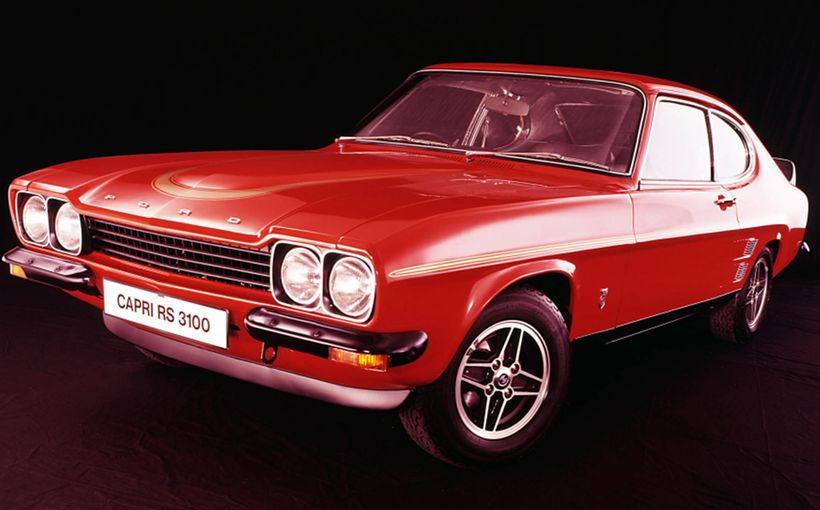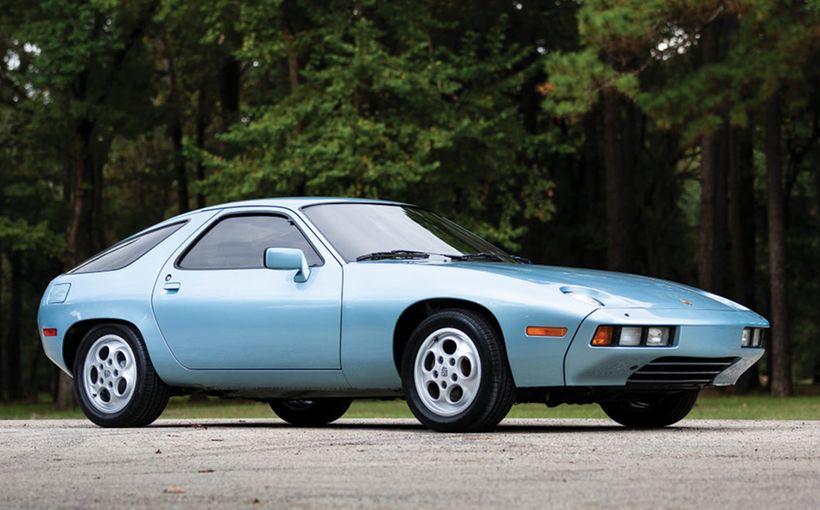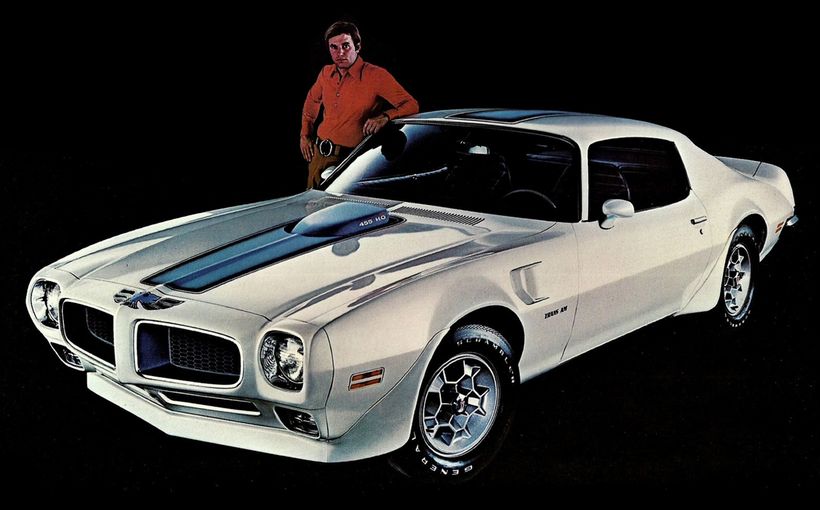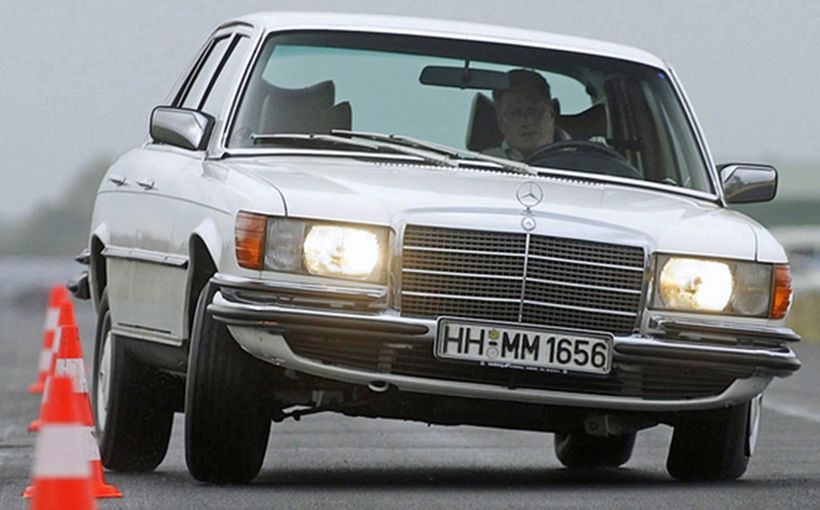Alfa Romeo 75 Turbo Evoluzione: A Need For Speed

On the eve of the first and only World Touring Car Championship in 1987, Alfa’s new turbocharged challenger was expected to be embroiled in a three-way fight for the ultimate tin-top title with Ford’s new Sierra Cosworth and BMW’s new E30 M3. However, the Italian machine fell short of expectations, not only in the WTCC but also Australian touring car racing.
Alfa Romeo’s decision to base its first turbocharged Group A contender on the Alfa 75 sedan (so named to celebrate 75 years of production) seemed a no-brainer. Like its much-loved GTV6 predecessor, the 75 was blessed with almost perfect front/rear weight distribution by attaching the car’s five-speed gearbox to the differential.
This trans-axle arrangement driving the rear wheels countered the weight of the engine up front, resulting in superb handling balance through torsion bar front suspension and a coil-sprung De Dion rear-end with inboard disc brakes to minimise unsprung weight.
For Group A racing Alfa Romeo produced 500 road-legal examples of a ‘sporting evolution’ of the 1.8 litre 75 Turbo model released in 1986. This was the minimum number required by the FIA to homologate the race-focused version as a WTCC contender.

The ‘75 Turbo Evoluzione’ was a no-frills homologation special equipped with the competition hardware Alfa needed for its impending global battle. The single batch of these cars was built in early 1987. They were available in only one colour (red of course) including the grille, which was usually grey. Large ’75 Evoluzione’ decals stretched across both doors on each side.
A body kit made from lightweight composites was designed to improve high-speed airflow, which according to Alfa dropped the 75’s Cd (co-efficient of drag) from 0.38 to 0.33. It comprised a deep front spoiler with aero splitter, front and rear wheel arch flares, side skirts, small rear lip spoiler and rear bumper. The seating design was also slightly altered.
The Evoluzione was supplied with red-coloured 6.0 x 15-inch wheels as standard but under Group A rules could run up to 10-inch wide wheels and race tyres. The suspension featured larger wheel bearings front and rear for greater durability. Alfa replaced the standard front torsion bars with coil-over shocks along with redesigned front uprights with racing geometry. The De Dion rear-end with adjustable camber and toe angles was also unique to the Group A car, located by a spherical bearing at the front along with coil-over dampers and outboard rear discs to speed up pad changes if required during races.
Alfa did plenty of race preparation under the bonnet too with the 75’s standard 1779cc engine being slightly reduced to 1762cc with smaller cylinder sleeves and pistons. By choosing this specific cubic capacity, Alfa must have known that the FIA was planning to raise the equivalency factor for turbocharged engines from 1.4 (1762cc x 1.4 = 2467cc) in 1987 to 1.7 (1762cc x 1.7 = 2995cc) in 1988.

That way the Evoluzione would start the 1987 season in the under 2500cc division with the M3 which allowed a maximum 10-inch wide tyre and very light 960kg minimum weight. Come 1988 it would just sneak in under the 3000cc threshold which allowed the same 10-inch tyre width but with a 75kg increase to 1035kg.
By comparison the Sierra (1993cc x 1.7 = 3388cc) would move up to the even higher 3500cc division in 1988 with the same 10-inch tyre width as the Alfa but a hefty 65kg increase to 1100kg. On paper at least, if the turbocharged Alfa and Ford had similar power outputs in 1988, the Italian car would have had a distinct advantage. However, at that stage Alfa Romeo would not have known of Ford’s ‘big turbo’ plans, or the engine problems that would cripple its own contender.
Other changes to beef-up the Alfa’s classic twin-cam for competition use included a stronger cylinder block, cylinder head and crankshaft main bearings. The larger diameter exhaust manifold/turbo arrangement was redesigned with the aim of producing more power, but it was compromised by having to fit around the LHD steering column and would cause nightmares for mechanics when fast engine changes were required at race meetings.

In standard road-going trim the Evoluzione’s engine was rated at 114kW (153bhp) at 5800rpm with maximum torque of 226Nm (167 ft/lbs) at 2600rpm. The racing version of course was expected to produce more than double that power (around 239kW/320bhp) to out-pace BMW’s naturally aspirated M3 and give Ford’s Sierra Cosworth a hard time.
Alfa Romeo’s ‘Alfa Corse’ competitions department under Cesare Fiorio geared up for its WTCC attack with six entries run by both Alfa Corse and a number of factory-supported teams. They also recruited some top-shelf driving talent including world sports car champion Jean-Louis Schlesser plus F1 drivers Jacques Laffite, Gabriele Tarquini, Nicola Larini, Paulo Barilla, Michael Andretti and Alessandro Nannini.
Sadly, the 75 Turbo Evoluzione failed to live up to expectations, particularly amongst the fanatical Italian fans that flocked to Monza for the opening round of the WTCC on home soil. Although the two works-entered Sierra Cosworths prepared by Ruddi Eggenberger were a no-show at Monza due to a technical dispute, the Italian cars never troubled the factory Fords from round two in Spain and were totally outclassed when the even hotter RS500 version was unleashed mid-season.

The Alfas (and the pre-RS500 Sierras) suffered even more humiliation by being soundly beaten by the BMW M3s. The German cars were supposed to have substantially less power from their non-turbo 2.3 litre fours (about 290-300bhp) yet from the start of hostilities proved to be more than just class contenders with several stunning outright victories over their turbocharged rivals.
The battle for the WTCC was exclusively between Ford and BMW. The reasons behind the 75 Turbo Evoluzione’s high profile failure were never confirmed but it would be fair to speculate, based on problems experienced in Australia, that a lack of engine power and reliability (not to mention turbo lag) were major handicaps.
In any case, despite scoring its best result of the season in round seven, with an encouraging third place at Silverstone behind two M3s (albeit when all the Sierras had problems), Cesare Fiorio promptly shut down Alfa’s WTCC program before the circus departed Europe for the overseas rounds.

Colin Bond: The Aussie Experience
“The major problem was that the turbo wasn’t big enough,” Bond told Shannons Club as he reflected on his first and only Group A season in Alfa’s 75 Turbo Evoluzione. “It had a number of things going for it but without the grunt of a Sierra it was never going to be competitive.”
The Sierra that Bond was referring to was not the car Ford originally raced in Group A with the relatively small Garrett T3 turbocharger. What turned it into a giant of international touring car racing was a mid-season homologation of the definitive RS500 specification, headlined by an upgrade to the much larger Garrett T4 on its Cosworth-designed DOHC 2.0 litre four.
With this huge ‘hairdryer’ and matching intercooler the Sierra was propelled into the supercar league, as power outputs soon skyrocketed to more than 500bhp in race trim with a stampede of more than 600 tyre-melting horses in full boost qualifying trim.
And with that upgrade went any hopes Alfa Romeo may have held of being an outright threat in Group A with its 75 Turbo, which like the Sierra was homologated with a T3 for its slightly smaller 1.8 litre DOHC four. In Australia the competition was even tougher than the WTCC because it faced not only Sierras, BMW M3s and Holden’s booming V8 Commodores but also Nissan’s turbocharged DR30 Skylines.

Bond’s LHD car was supplied by Alfa Romeo Australia and shipped from Europe in preparation for the 1987 Australian Touring Car Championship and local rounds of the WTCC at Bathurst and Calder. He also secured some much-needed major corporate sponsorship from Caltex.
This car, like its GTV6 predecessor, was race-prepared by Belgium’s Luigi Racing and upon arrival its aluminium roll cage was replaced with a full steel cage to improve chassis stiffness. However, Bond clearly remembers the endless difficulties of racing the 75 Turbo, with engine problems causing most of the heart-ache and late nights in the workshop.
A look through the 1987 ATCC race reports reveals a litany of engine-related failures including turbochargers, fuel pumps, cooling systems and engine management. Bond’s best results were seventh-place finishes at Lakeside’s round three and round five held at Adelaide International Raceway.
It must be said that electronic engine management systems for Group A touring cars in those days were in their infancy, which only made life harder for those chasing more power with reliability from highly-stressed turbo engines. It was particularly tough for Bond as the supposed 320bhp from the 1.8 litre Evoluzione engine turned out to only be around 200bhp when it arrived in Australia.

“The 75 certainly handled alright because it shared a similar mechanical lay-out to the GTV6 with the rear trans-axle,” he said. “Its weight distribution and chassis balance were pretty good but the (T3) turbocharger was just too small to make enough power so it (the handling) was mostly wasted.
“It was difficult to drive in terms of maintaining momentum, because its power delivery was like a light switch. You’d get on the throttle and there’d be nothing, then all of a sudden it would light up. The turbo lag was pretty bad, but we didn’t have the engine management hardware or (software) expertise the boys have today. It was the same for the Sierra runners, of course, but at least they had heaps more power!”
When the Evoluzione’s chronic power shortage became evident early in the season, the team called on the services of prominent Alfa sports sedan and Alfasud racer Joe Beninca, who with his brother Dominic ran a Melbourne Alfa Romeo dealership under the Beninca Motors banner.

“Alfa quickly needed to find some speed in the car and as I was playing around with turbos at that stage they approached me for help,” Beninca told Shannons Club.
“I remember there was always a lack of money to do things properly. In those days the Zytec was one of the best (electronic engine management systems) you could buy. The ECU was only a few thousand dollars but the licence and the software needed to program it was megabucks and (Alfa) just didn’t have that kind of money to throw at it. So we tried a few other things, like controlling the distributor advance curve to retard the ignition under boost.
“After studying the regulations, we also managed to find a loop-hole that allowed us to make some modifications which may have seemed illogical, but they got us around the problem of the turbo running out of puff. It allowed us to go from the standard turbo’s 265bhp, which was all it could pump out before it would fail, to well over 300bhp. It still had a bit of throttle lag, but if you allowed for that it was okay to drive.”
One of the most significant changes to Bond’s car, which assisted Beninca’s power search, was an early season conversion from LHD to RHD.

“The European works cars should have been RHD from the start, because with the turbo’s location and the bigger pipes they used on the exhaust system it was a bit of a nightmare trying to make it all fit around the steering column on the left-hand side and still work properly,” he explained.
“By moving the steering column out of the way, the exhaust dump pipe was a much better (more efficient) shape plus it made changing engines a lot easier and faster. By the time we got to Bathurst it had a peak output of about 330bhp for qualifying and it raced at about 280bhp.”
It was in that chaotic storm-affected race that Bond’s talented but hot-headed young Italian co-driver Lucio Cesario crashed heavily in The Esses on top of the mountain, which meant the heavily damaged car missed the Calder WTCC round held the following weekend.
“Lucio was a typical Italian,” Bond recalled. “You’d go testing with him and he would drive fantastically all day and not put a foot wrong, but put him in a race and the red mist would descend. He was certainly talented but trying to control the ‘Italian’ in him was the problem.”

After lengthy repairs the lone Turbo 75 Evoluzione returned to the track for its final major Australian outing in the Group A support races at the Australian Grand Prix meeting in Adelaide. Bond qualified fourth fastest for a second-row starting position on the challenging street circuit before scoring his best result of the season by finishing fifth. Beninca said the car’s increased competitiveness was purely the result of more engine gains.
“For Adelaide we fitted one of the early Autronic engine management systems which only controlled the fuel injection, but it allowed us to optimise the fuel mixture through the rev range. If we’d had an EMS with separate fuel and ignition (maps) it would have performed even better.
“Given that and other improvements the car would have been really good if it had run the next year. We would have been able to maintain at least 330bhp in race trim with reliability. I remember running one of those 1.8 engines in my sports sedan and it was making about 550bhp (with larger turbo etc) so there was nothing wrong with the engine in terms of being able to cope with the power.”

For Bond and his new sponsor Caltex, though, the writing was on the wall for 1988. Against the awesome might of the Sierra RS500 they would have just been making up the numbers, along with Peter Brock’s Mobil-backed BMW M3s which were totally outclassed by the turbo Fords.
“It was never going to be competitive against the Sierras in outright terms, so we had no choice but to go with a Sierra as well,” Bond reflected. “It was also a tough time for Alfa Romeo in Australia (selling cars) because with the 90 and the 75, they were fairly ordinary-looking cars, where as in the past Alfas always had a bit of style about them.”
It’s no surprise that Bond doesn’t have fond memories of the 1987 season, given the myriad problems and lack of results. However, he does readily recall the 75 Turbo Evoluzione’s unique and infamous contribution to Aussie motor sport history: “Cesario’s crash triggered the first use of a Safety Car at Bathurst!” he quipped.









